The northern part of the Richebourg vineyard is – or at least was – called Les Verroilles sous Richebourg.
The two parts of Richebourg are today labeled as one vineyard, and talk about the differences between the two is now rare, and random.
But there are some interesting geological and topological differences one can note – differences that some assert can explain tasting experiences.
May 2021
Les Verroilles sous Richebourg
Richebourg today includes two climats – Les Richebourg with 5.05 ha (the original part) and Les Verroilles ou Richebourg with 2.98 ha: a total of 8.03 ha.
Domaine du Clos Frantin is the only estate that produces a wine solely from Les Verroilles ou Richebourg.
The other producers have a large proportion of their holdings in Les Verroilles – but also a bit in Les Richebourg.
One would, however, expect the Les Verroilles terroir to shine through in the wines, as it produces the majority of the grapes.
The two sections
Below we see the map of the two sections (an eight-year-old Winehog map; time does fly):
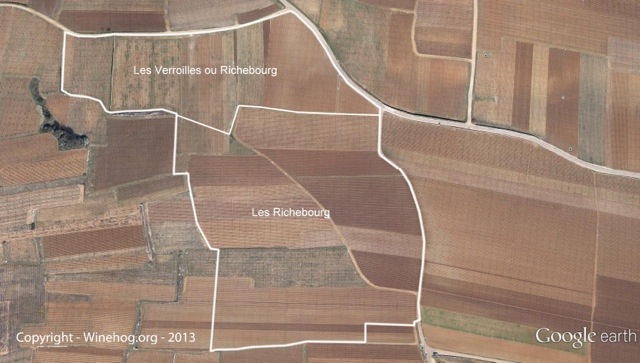
To get some names on the map, let’s look at the ownership of Richebourg:
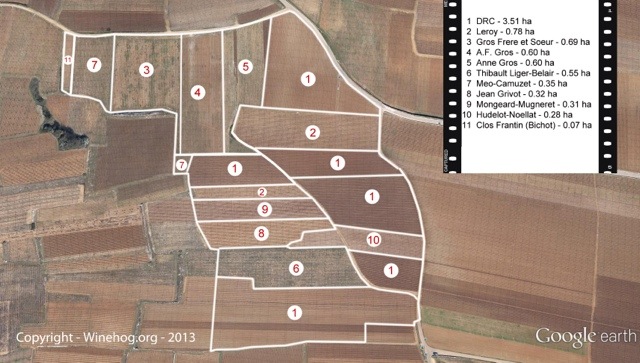
A short history of Les Varoilles
Lavalle, in 1855,1 mentions the climat as Les Varoilles sous Richebourg, while the term officially used today is Les Verroilles ou Richebourg. The change from “sous” to “ou” was part of the unification process, as Les Verroilles’ owners wanted to link it more closely to the Richebourg brand.
The unification of Les Richebourg and Les Verroilles sous Richebourg
Les Richebourg and Les Verroilles sous Richebourg were separate vineyards until 1924, when they were unified under the name of Richebourg. Even today, the two climats are mentioned on some maps, though in official records the two lieux-dits remain separate.
Before the unification of Richebourg, there was much discussion, and even legal battles, about the right to bottle the wines from Les Verroilles under the name Richebourg.
Some considered Les Richebourg to be the superior vineyard, while the owners of Les Verroilles argued differently. Lavalle classified Les Richebourg as “Tete de Cuvee,” while he rated Les Veroilles sous Richebourg as “Premiere Cuvee.” Rodier in 19202 disagreed, and rated both climats “Tete de Cuvee.”
Les Richebourg faces directly east, with the rows of vines running east/west, giving this climat somewhat better sun exposure. Les Verroilles faces more northeast, with the rows oriented north/south. In general, the harvest is earlier in Les Richebourg due to the more direct sun exposure. Henri Jayer mentioned that one normally should harvest Les Verroilles two to three days after Les Richebourg, and that the grapes from Verroilles “promise lower alcoholic content, but always a better pH.”3
In the “old days” – before global warming – the better exposure of Les Richebourg could be an advantage in lesser years. But in the last two decades, most vintages have produced grapes with good ripeness from each terroir, and the northeast exposure of Verroilles could even be an advantage in hot years.
Summing up, I don’t think there’s a big difference in quality today; the wines from the Verroilles terroir in general match the quality of those from Les Richebourg. Style-wise, the wines from Les Richebourg can be slightly denser and massively powerful, while some from Les Verroilles show slightly better acidity, and sometimes a more pronounced stony minerality. In fact, the difference among the producers’ styles is far more important than the terroir difference between the two climats – and many wines are indeed a mix of the two.
In the end, Les Verroilles sous Richebourg was added to the Richebourg vineyard in 1924. In 1936, the vineyard got AOC grand cru status for the full area today know as Richebourg, with its two climats.
The Brompton photo View
I enjoy taking my bicycle for photo tours in the vineyards, as the feeling of the area’s geology and slopes becomes more tangible.
Below are photos from a trip to the northern part of Richebourg and Aux Brülées, starting out on the road between the two vineyards.
The first photo shows one of Domaine de la Romanée-Conti’s plots, which has been uprooted for re-planting (left). This parcel includes a part of Les Verroilles sous Richebourg.
Above it is Anne Gros’ parcel, and at the top of the photo is Cros Parantoux, just left of the mid-slope trees. This vineyard also slopes somewhat to the north.
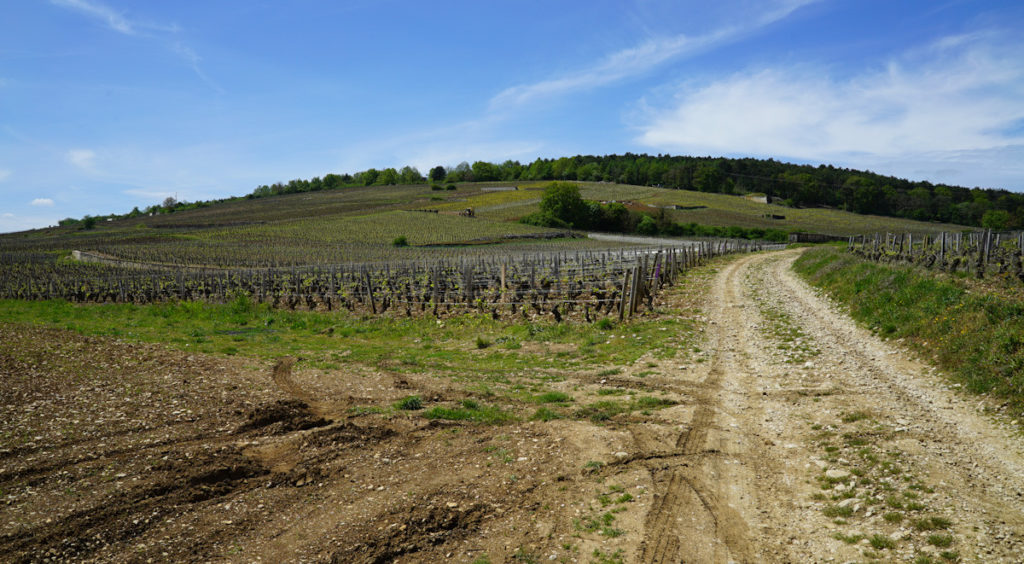
Moving upslope to Anne Gros’ plot, and looking down at the uprooted DRC parcel, one sees the old wall of Les Verroilles sous Richebourg. Vosne itself is in the background. It’s clear that the Gros plot is sloping east, and somewhat north.
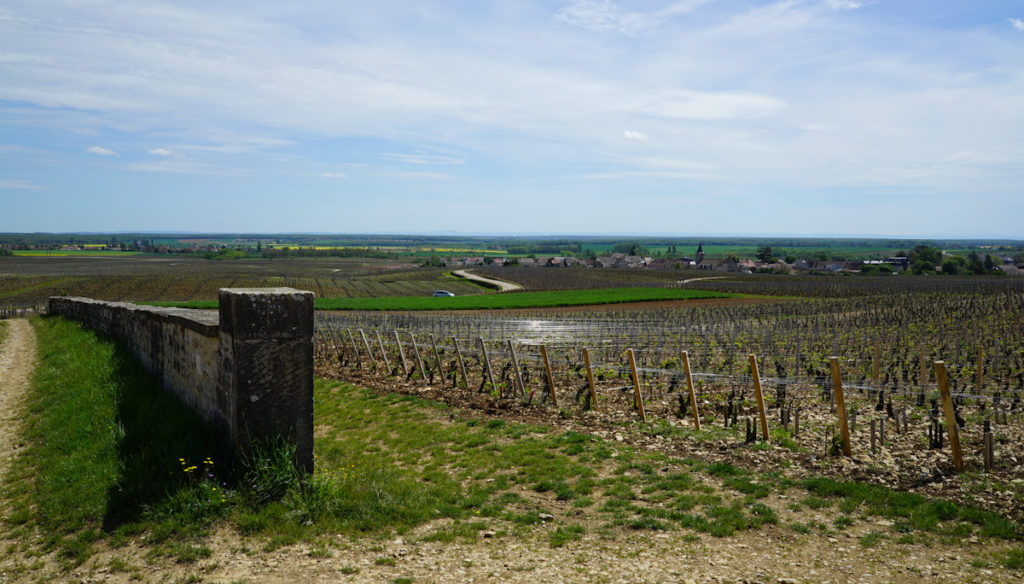
Looking north/south through the Gros plot one sees a slight slope towards the north – although not dramatic.
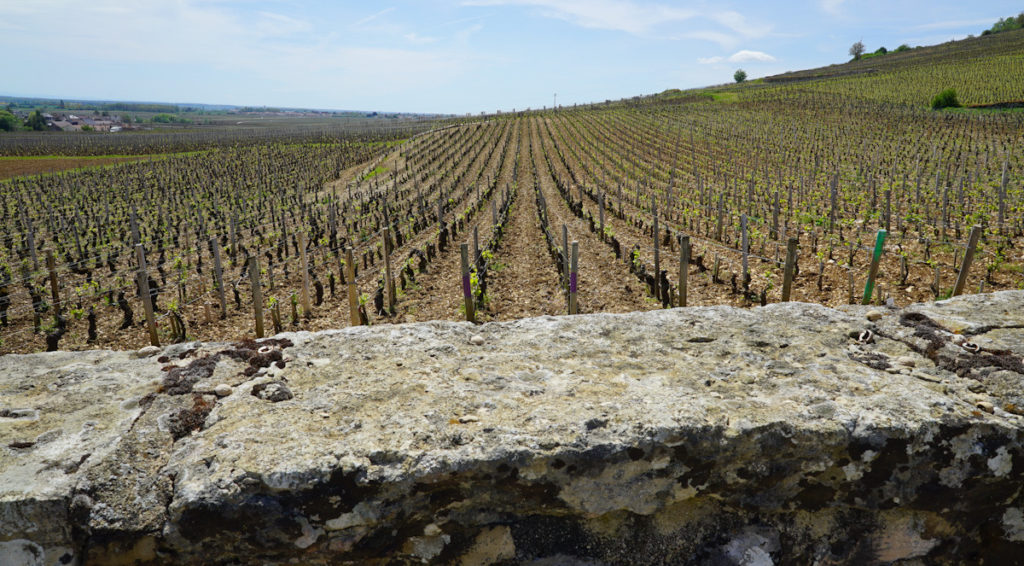
Up the slope are the A.F. Gros and Gros Frere et Soeur plots, located north of Cros Parantoux.
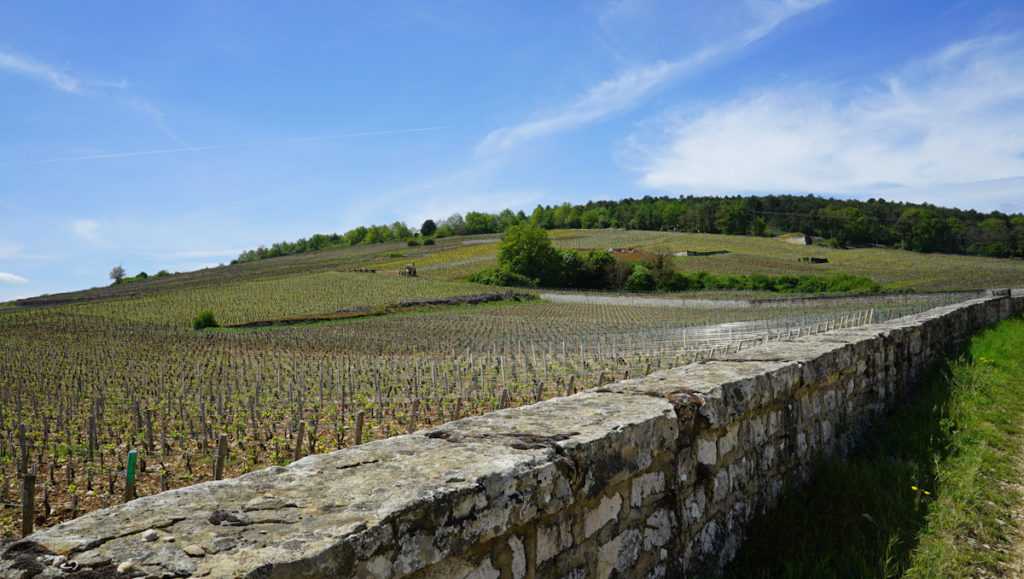
Moving to the Gros Frere et Soeur plot brings into view Meo-Camuzet’s parcel in Les Verroilles sous Richebourg, behind the wall below the trees.
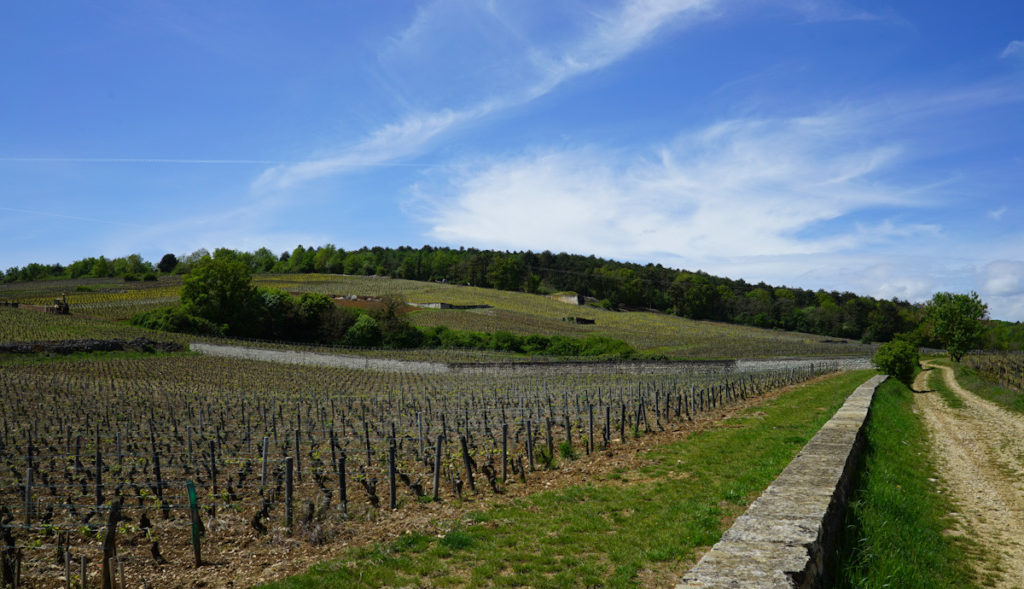
Seen from closer, the Meo plot adjoins the domaine’s Cros Parantoux holding.
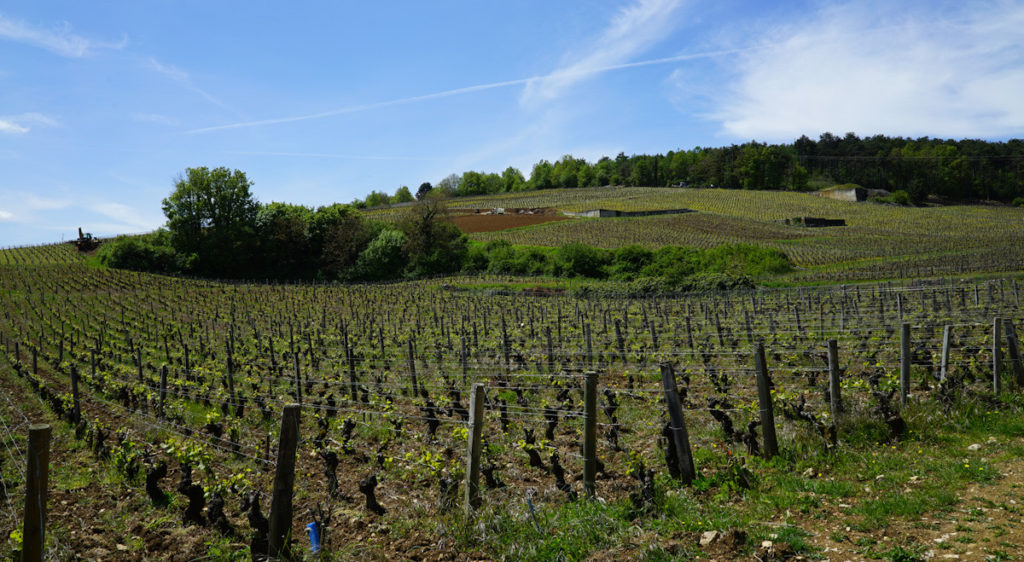
The Meo plots were planted in the 1950s – both Cros Parantoux and Richebourg. According to Jean-Nicolas Meo, a lesser-quality clone was used by Henri Jayer in Cros Parantoux. It’s important to note that at the time, Cros Parantoux was only considered a village Vosne. It was first bottled separately in 1977 (although not on the label), before being labelled specifically in 1978.
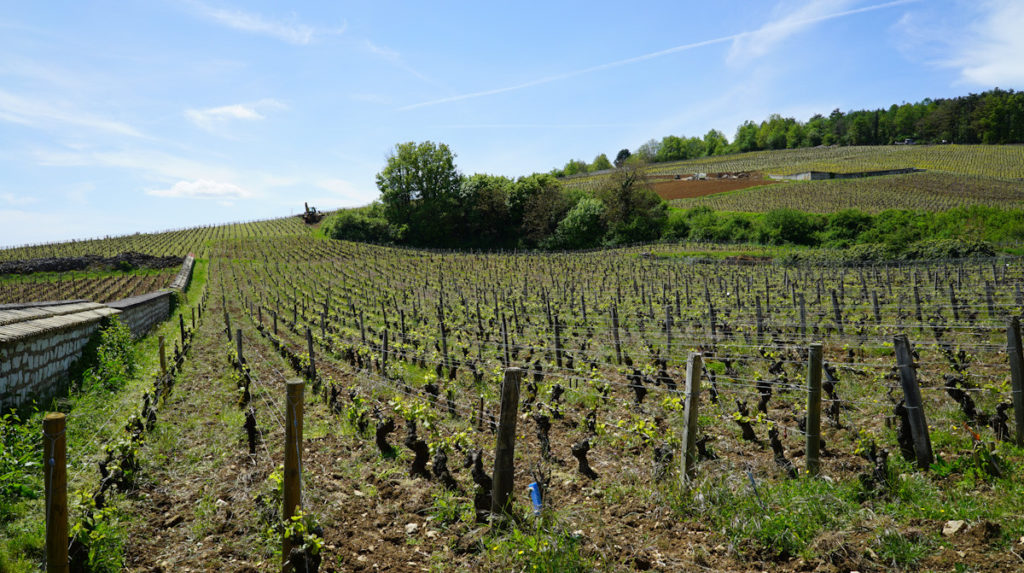
References & Sources:
- Jules Lavalle, Histoire et Statistique de la Vignes et Des Grands Vins de la Côte d’Or (1855)
- Camille Rodier, Le Vin de Bourgogne (1920)
- Jacky Rigaux, A Tribute to the Great Wines of Burgundy – Henry Jayer (2009). p. 65

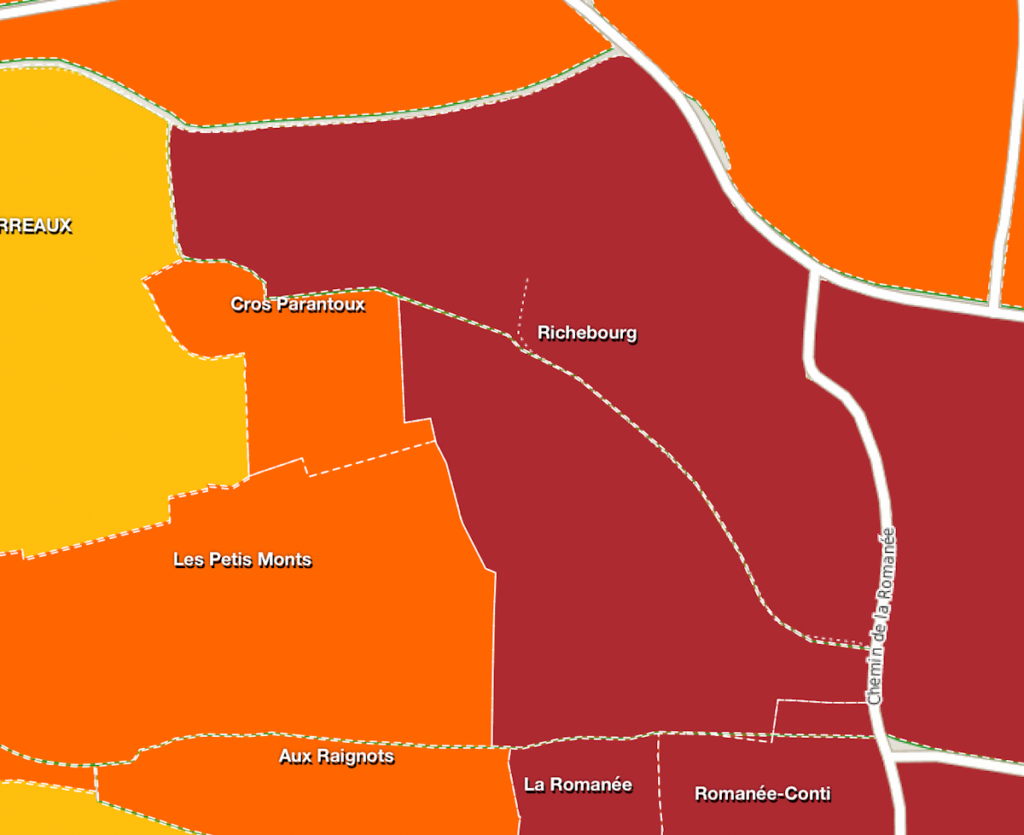
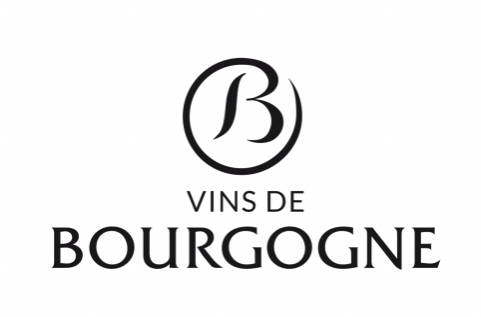
 - A true vin d’émotion – a Burgundy of passion
- A true vin d’émotion – a Burgundy of passion - A truly hedonistic wine – lively and enjoyable
- A truly hedonistic wine – lively and enjoyable - A vivacious wine for pure indulgance
- A vivacious wine for pure indulgance - A potential vin d´émotion - frais et léger
- A potential vin d´émotion - frais et léger
Leave a Reply
You must be logged in to post a comment.